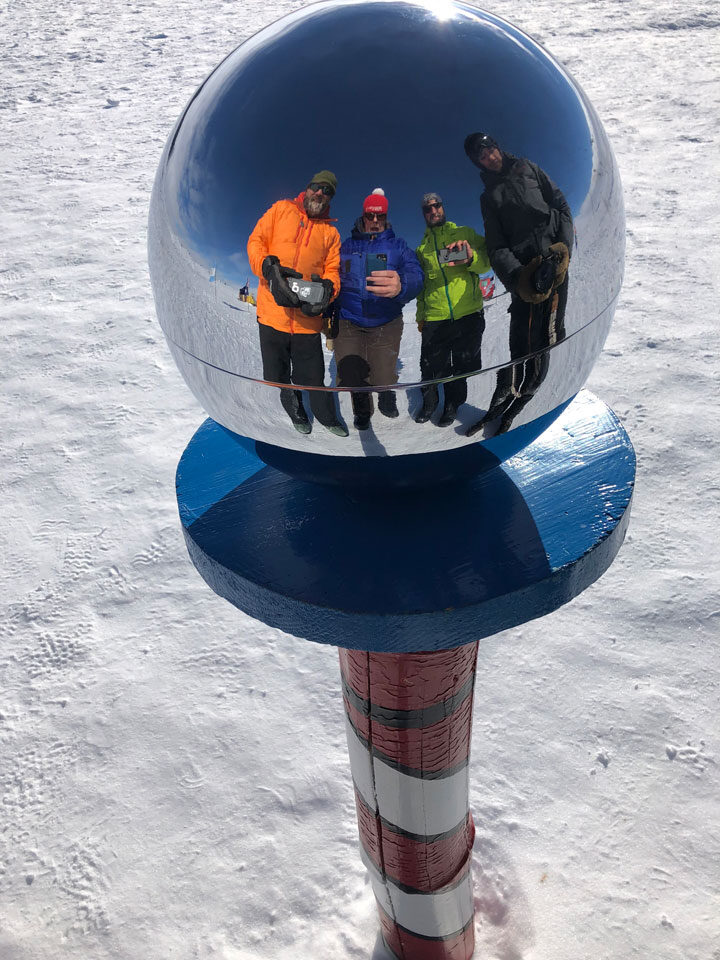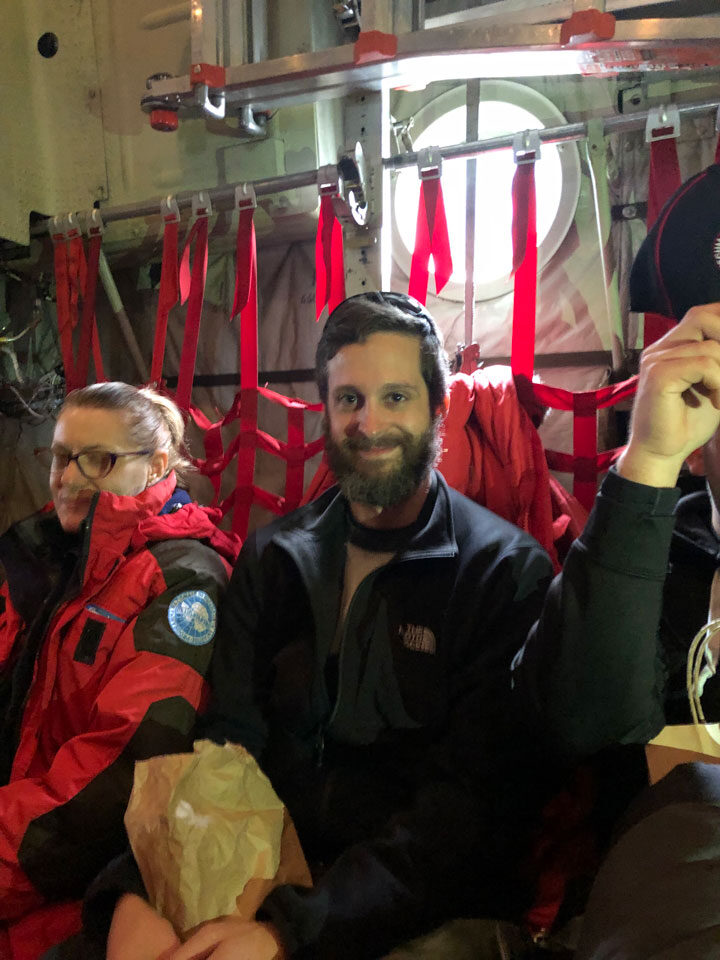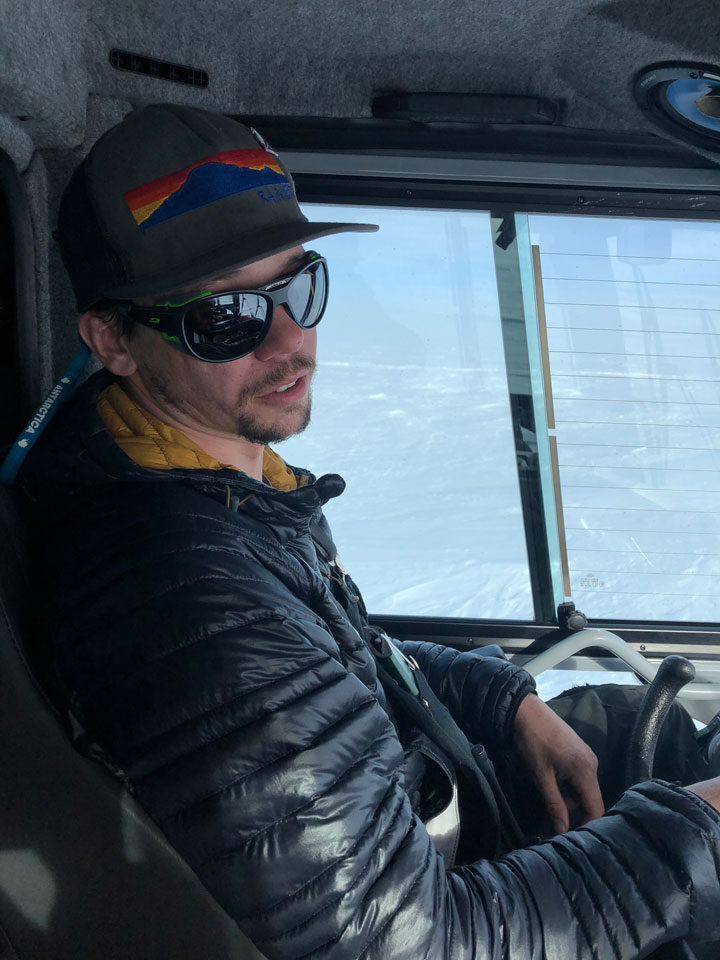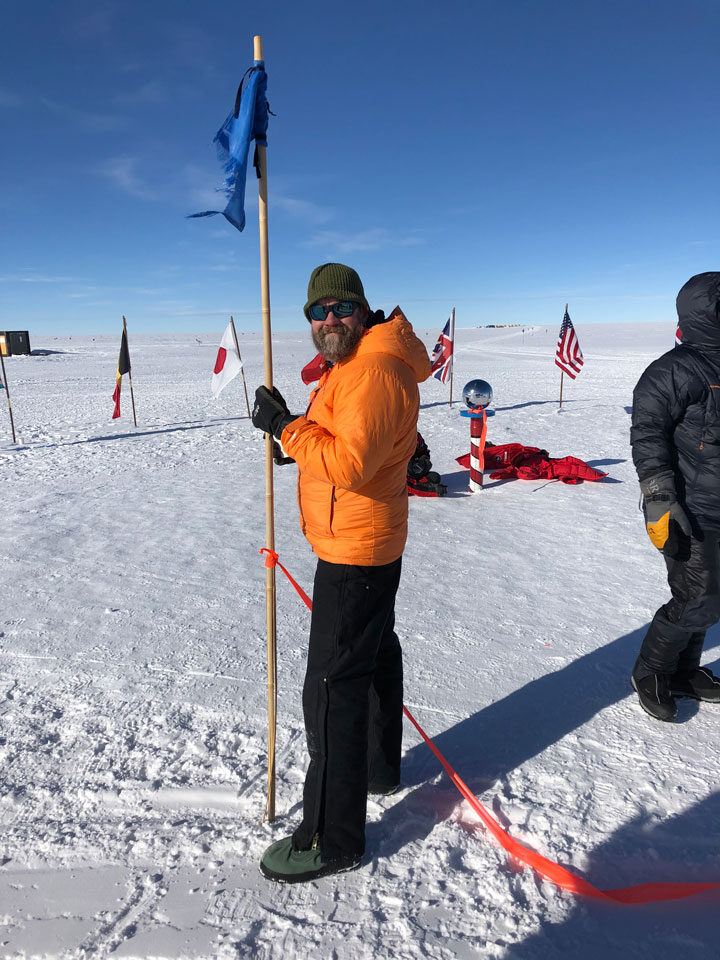This winter, our field team of four completed the two-week 88S Traverse in Antarctica in an effort to provide the best means of assessing NASA’s ICESat-2. When you show folks pictures from the trip, they are usually taken by the beauty of the stark landscape. They become interested in hearing more. Then, after you explain daily temperatures, what you ate along the traverse, and your access to WiFi, the trip suddenly seems extreme. And they think you are crazy for participating in such an endeavor.
So, let’s meet the crazy 88S participants.

I’m Kelly and I am the leader of this project. This was my second year on the 88S Traverse and I was the only crazy person who had done this twice; everyone else was new to the project this season. That speaks volumes about my deep-field cooking skills! I am a researcher at the University of Maryland and NASA Goddard Space Flight Center, specializing in the remote sensing of ice sheets, and I have been on the ICESat-2 project since 2010. This was my 11th trip to Antarctica, which included a few years with the science support staff at McMurdo Station, a few years of doing field work toward my PhD, a season with the Australians during my postdoc, and then of course a couple of seasons with this project. I grew up skiing in New England and I absolutely love cold environments and the challenges of doing this type of field work.

Adam was the other NASA researcher on this trip. This was his first year on the 88S Traverse and his first trip to Antarctica. Overall, I think he had a really good time! He is also a researcher at the University of Maryland and NASA Goddard Space Flight Center, and has been on the ICESat-2 project since about 2013, where he has been looking at how green laser light from ICESat-2 interacts with the surface of the ice sheet. Adam hails from New Hampshire and loves skiing, so he was enthusiastic and well suited for much of the Antarctic climate.

Matt was the Traverse mechanic. Similar to Adam, this was his first year on the 88S Traverse and his first trip to Antarctica. And I know that he enjoyed the experience because he decided to stay in Antarctica for the winter! He took a lead mechanic position at McMurdo Station soon after returning from the Traverse. The winter will be pretty cool for him, as it will allow him to experience being in 24 hours of darkness during the period around the southern hemisphere’s winter solstice (June 21st). Matt is a PistenBully expert and gained his experience at a ski resort in Washington called White Pass, which is where Olympians Phil and Steve Mahre grew up. So, similar to Adam, he also loves skiing and was well suited for much of the Antarctic climate.

Chris was the Traverse mountaineer and medic. This was his first year on the 88S Traverse but Chris has oodles of experience in Antarctica, dating back to the 1990s. He’s a licensed IFMGA American Mountain Guide that has led trips all over the globe, mostly in steep or icy regions. This type of experience is so important for the safety of field projects that are based on the ice sheet. Added to these highly technical skills is his medical training: Chris was a US Navy Hospital Corpsman and provided us with a top-notch level of experience that we all hoped we would never need while on Traverse. Like Matt, Chris is from the Pacific Northwest and grew up skiing in that region. Most recently claimed Seattle as his home base. After the traverse, Chris briefly joined another Antarctic traverse, which was based out of McMurdo.

So the common thread between the folks on this traverse was of course the ‘crazy’ component, but also that each of us has an overall love of spending time in cold environments. And coffee. Everyone on this trip loved their coffee.




I evo još jedan komentar živjele šume i više kisika zagađivačima zraka i prirode zabranjen pristup!
Vi k9ji uništavate šume bit ćete kažnjeni od prirode i samog planeta,jer zašto uništavati šume koje upijaju vodu i ugljikov dioksid a čovjeku i drugim bićima daju kisik.Bez žume nema ni kisika. Molim sve zagađivače okoliša da poglledaju ponovno i detaljno proces fotosinteze,glavnu ulogu imaju šume,kiša i sunce.Da dobro ste čuli proces fotosinteze u udžbeniku iz biologije.Volimo stabla,volimo šumu♻️???? (Čuvajmo Okoliš da dulje živimo).
Nove satelitske snimke su dokaz da je Planeta sve zelenija ima na svijetu sve više šuma unatoč masovnom kršenju prašuma.Na kraju će priroda dobiti čovjeka.
Slava prirodi i šumama jer Zemlja je naš dom
Thank you all so much for doing this work! I appreciate each of you!